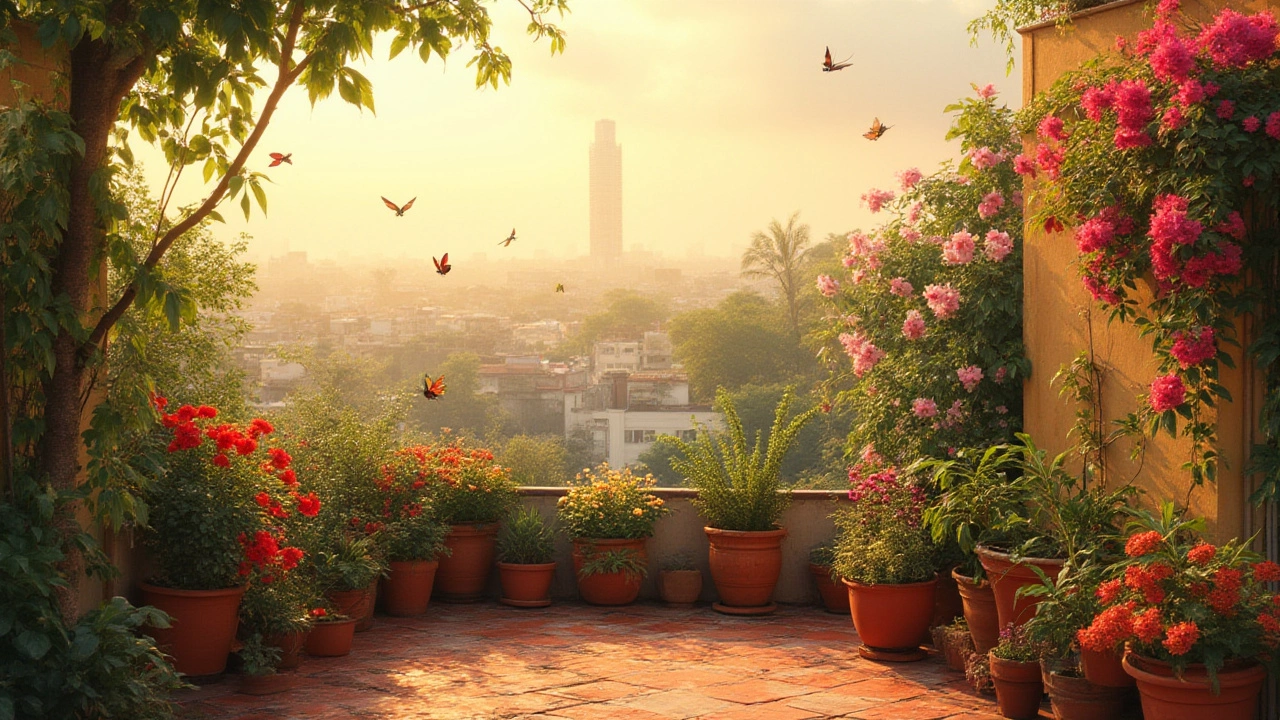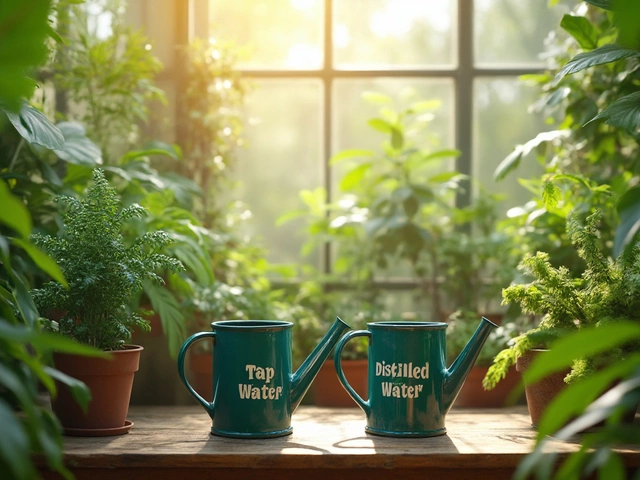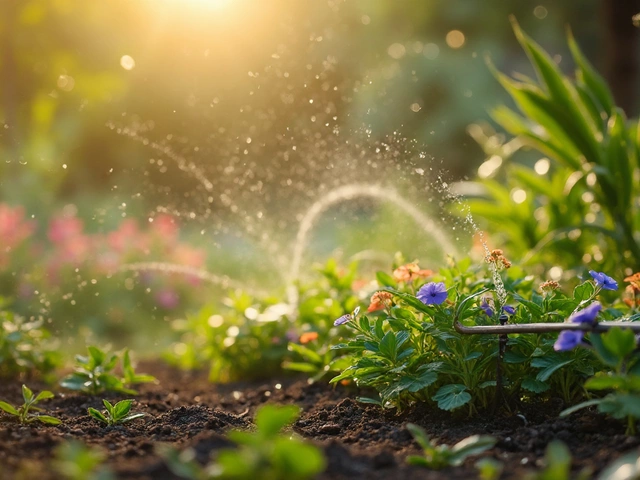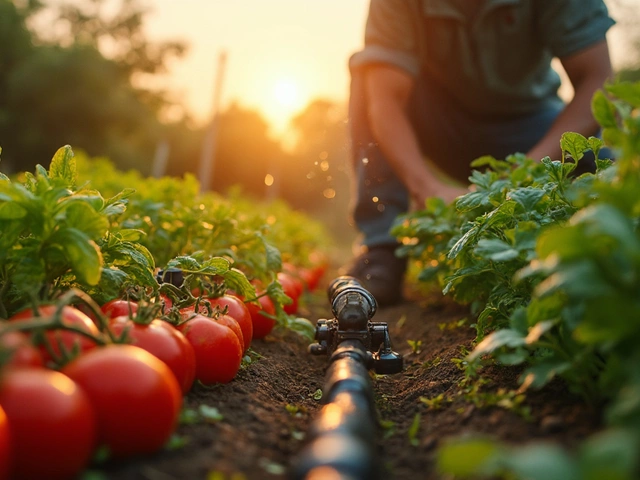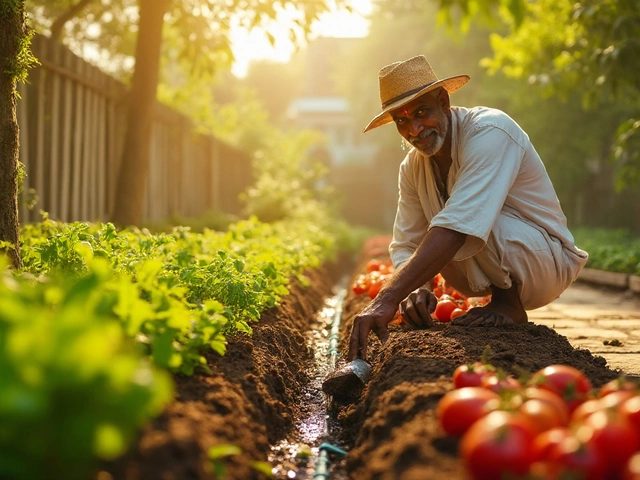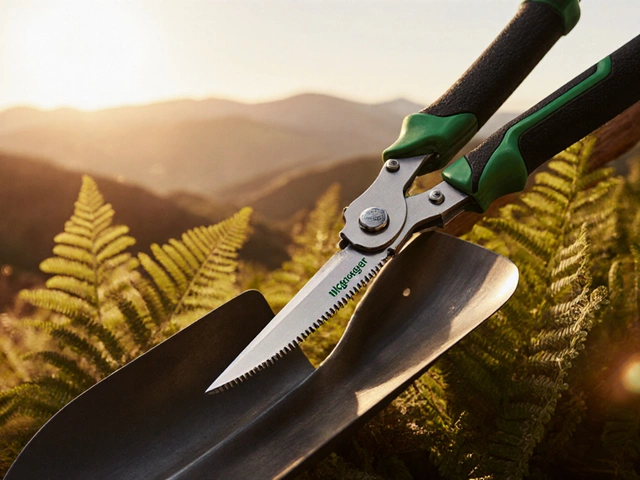Indian summers don’t play nice. The mercury climbs past 40°C in many parts of the country, and the relentless sun can bake the earth dry. Think about walking barefoot at noon—it’s the same tough deal for most plants trying to stay green in such brutal heat. You can almost hear your favorite flower beds sigh in distress, wishing for monsoon clouds. So what actually stands tall and lush when most houseplants and garden beauties quit the game? Let’s get practical about which plants really are the best picks for summer in India, so you won’t waste another rupee (or minute) on greenery that can’t take the heat.
What Makes a Plant Survive the Indian Summer?
Plants that thrive during Indian summer have a few tricks up their leaves. They can shrug off heat, go longer between drinks, and still look good. But it’s not just about brute toughness—some plants are surprisingly pretty or can even spice up your lunch menu. It’s all about picking varieties with solid “summer street-smarts.”
If you’ve ever wondered why your neighbor’s bougainvillea is exploding with color while yours sits there sulking, it’s probably about survival mechanisms—not a secret fertilizer. Plants that last through Indian heatwaves typically have one or more of these features:
- Thick, waxy leaves that lock in moisture (like aloe vera or jade plant)
- Deep root systems that mine water below parched soil (think neem and gulmohar)
- Natural drought resistance, meaning they slow down water loss in clever ways
- Ability to set flowers or grow during extreme heat, not just survive
One fascinating fact: Some studies from the Indian Institute of Horticultural Research found that certain “native” plants actually photosynthesize better once temperatures hit their usual high. Imported plants, even the fancy ones from nurseries, usually end up wilted and crispy after a week. Lesson: When in doubt, trust local plant wisdom.
It’s also worth considering soil types. Indian cities and towns have everything from sandy loam to sticky clay. Pick plants suited to your region, and you’ll slash your watering and maintenance time by half. Knowing all this lets you plan a garden that’s not just about survival—but actual summer color and blooms.
The Top Summer-Resistant Flowering Plants for India
If you’re chasing color and want flowers that handle the relentless sun, you do have choices. Some make your balcony look like Holi arrived early, while others attract butterflies and keep your air fresher. Here’s a breakdown:
- Bougainvillea: Probably the king of summer blooms. It laughs at direct sunlight and rewards you with purple, pink, or orange bracts—the brightest punch you can add to your garden. Bonus: Needs almost no care once established.
- Hibiscus: This classic is everywhere in India for good reason. It’ll flower all summer, and the blossoms are edible too. Try them in chutneys—seriously, they taste great.
- Portulaca (Moss Rose): A sun-worshipper, portulaca carpets containers with jewel-bright blooms. It needs so little water that you can go on holiday, return, and still find it thriving.
- Marigold: Another Indian favorite, and for good reason. It repels insects (especially mosquitos), which is handy as summer transitions to monsoon. Good for homemade garlands too.
- Gulmohar (Flame Tree): Not a shrub, but worth mentioning. Its blazing red flowers dominate avenues across Indian cities through the dry months.
These are not just pretty faces—they’re real performers. Bougainvillea, for example, thrives in soil with an almost “don’t care” attitude to watering. Just park some in full sun, feed a bit of compost every once in a while, and prune after the flowering flush. Hibiscus blooms on fresh new wood, so trim it back a bit after spring and you’re all set for daily flowers through peak heat.
People sometimes make the mistake of giving these plants too much fertilizer or water. Both are mistakes. You’re just encouraging leafy growth with fewer flowers. Dry spells actually push some summer plants to flower more, because that’s their strategy to keep the species going when water’s low. Nature knows best.
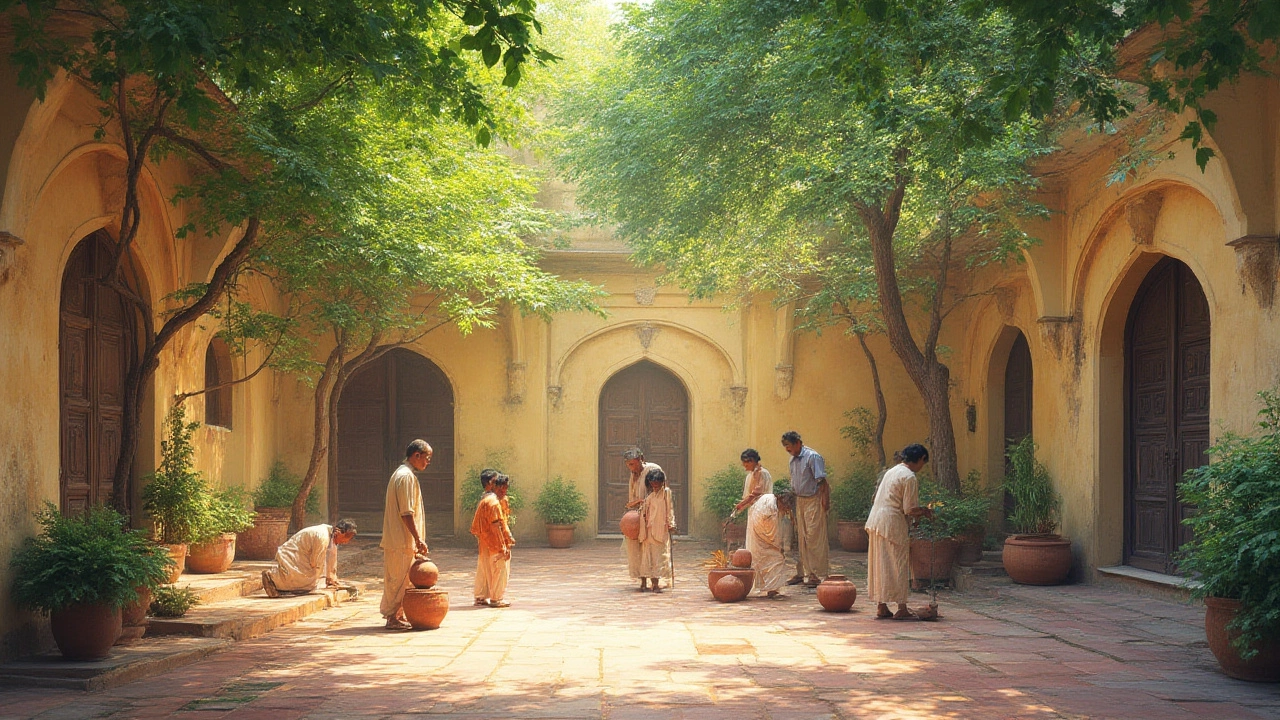
Drought-Tolerant Greenery: Not Just Cactus!
Most folks think of cacti when talking about drought resistant plants. But Indian summers aren’t just for succulents. You’ve got a whole lineup of tough green soldiers willing to take the heat, and some work great as indoor or balcony plants too.
- Jade Plant (Crassula ovata): Easy to keep, with thick, fleshy leaves. It looks chunky but grows slowly—perfect for containers or small spaces. Studies at the National Botanical Research Institute in Lucknow note its long life with nearly zero fuss.
- Aloe Vera: Not just for skincare, this plant can outlast a missed watering or two. And you can break off a leaf in case of burns or sun rash—a true Indian summer hack.
- Areca Palm: It gives strong “beach holiday” vibes and copes surprisingly well indoors, even in muggy southern cities.
- Spider Plant: Safe, forgiving, and good for purifying indoor air during months when dust storms are frequent in north India.
- Neem Tree: Nobody needs to be told about neem’s uses. It’s a shade provider and natural pest fighter, championed for centuries in Ayurvedic texts.
People often try to “spoil” drought-tolerant plants with daily watering and soft soil. Nope, don’t. Give them tough love. Even jade and aloe prefer to dry out between drinks. Leave them in bright locations, and—especially in balconies—let the pots drain properly. With hunks like neem or gulmohar, it’s all about planting them directly into the ground before the start of summer so their roots grow deep and strong by June.
One cool example from my own life: There’s a patch behind my house where only Max our dog dares to nap at noon. Years ago, I planted jade, aloe, and some dry-land grass there. While the rest of the yard might bake, that patch—thanks to these survivors—looks almost smug about the heat.
Edible Choices: Kitchen Gardens That Beat the Heat
Keen on harvests through summer? You’re not stuck with just chillies and brinjals. Believe it or not, there’s a tasty list of veggies and herbs built for Indian summer’s wrath:
- Amaranth (Chaulai): Grows fast, greens you can sauté, and even the seeds are nutritious—packed with iron and calcium. Amaranth doesn’t shut down when it’s steamy.
- Okra (Bhindi): It’s almost legendary—loves high heat. Nothing like crispy bhindi on a sticky summer day. Plus, it flowers before fruiting—good for bees.
- Bitter Gourd (Karela): A true heatwave buster. The vines sprawl quickly, offering shade and fruit right until the first burst of monsoon rain.
- Cowpea (Lobia): It’s drought resistant, roots fix nitrogen, and it gives steady beans through the hottest weeks.
- Coriander: Sown every two weeks, it keeps greens coming, even when most herbs wilt by noon. Direct sunlight is often too harsh—try filtered light placements.
The trick with edible summer plants? Mulching, and spacing. When the sun’s battering down, tuck straw, dried grass, or coir mulch around your plant’s base. This keeps the soil cooler and saves on watering. For climbers like karela or bottle gourd, use old bamboo or wire supports—they explode in growth if you offer them a little elevation for air movement.
One simple chart can help when picking kitchen garden options:
| Plant | Days to Harvest | Average Water Needs | Heat Tolerance |
|---|---|---|---|
| Amaranth | 30-35 days | Low | High |
| Okra | 45-55 days | Medium | Very High |
| Bitter Gourd | 50-60 days | Medium | Very High |
| Cowpea | 55-65 days | Low | High |
| Coriander | 25-30 days | Low | Medium |
Even when you’re low on space, a few grow-bags on a balcony can keep salads and curries tasting homegrown all the way to the first rain. Stick to the easy options at first and watch how they handle the scorching weeks—then double down next season on your favorites.
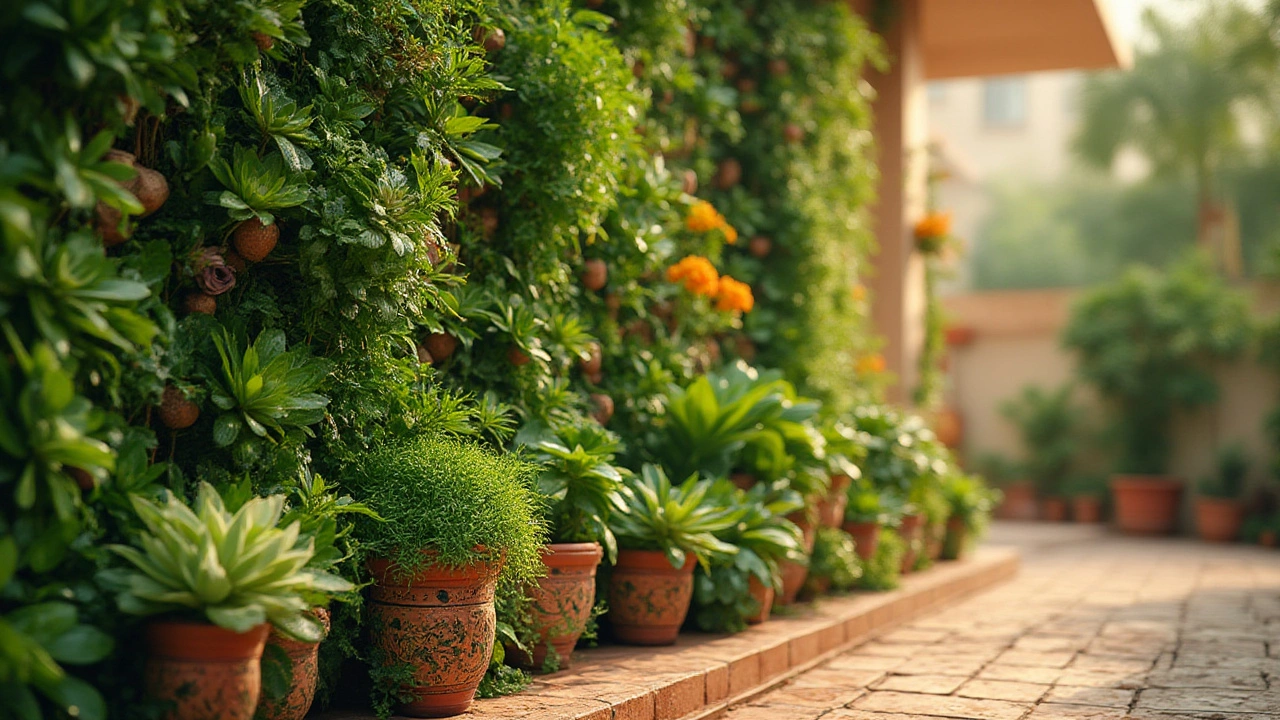
Tips to Boost Survival: Watering, Mulching, Smart Placement
You’ve picked the right plants. Now how do you make sure they don’t dry to a crisp or get sunburnt? It’s all about the small stuff: Watering routines, mulching, where you put the plants, and what time of day you give them attention.
- Water deep, not often. Shallow watering just burns off by noon. Aim for twice a week, but soak the roots. Use a drip system if you can—there’s a reason you see these on so many rooftop gardens.
- Mulch, mulch, mulch. Every bit of dried leaf, grass, or coconut husk saves moisture. Spread them around all your summer plants—think of it as sunscreen for their roots.
- Morning or late evening is the time to water or tend your beds. Midday? Stay inside, check on Netflix, and your plants will thank you for it.
- Give climbers and larger shrubs some filtered sunlight. Even the hardiest can get leaf scorch if you shove them under direct sun on north-facing terraces.
- Clip off burnt leaves quickly—it’s like getting rid of the sick branches, saving the rest of the plant from stalling.
Ever tried watering with a clay pot (matka) sunk in the soil? It works wonders. A slow trickle of moisture right where the roots need it, without soaking the leaves and causing fungal issues. Clay pots work well for fruiting plants and deep-rooted shrubs.
And here’s the thing most folks miss: Summer is also when pests go wild—red spider mites, mealybugs, aphids. Neem oil spray every ten days (diluted with water) usually keeps the nasties away, and doesn’t harm pollinators. You don’t want chemical sprays anyway, especially around edibles or pets like Max wandering in for a sniff.
Now, picking summer plants India wisely makes a real difference. We’re not just talking about surviving the season, but actually enjoying leafy balconies, edible harvests, and even fresh flowers during peak heat. You don’t need heaps of money or hours to spare—just the right kinds of plants and a bit of observation. Come another blazing summer, your space could be a cool green escape, while others watch their gardens wilt by May.
